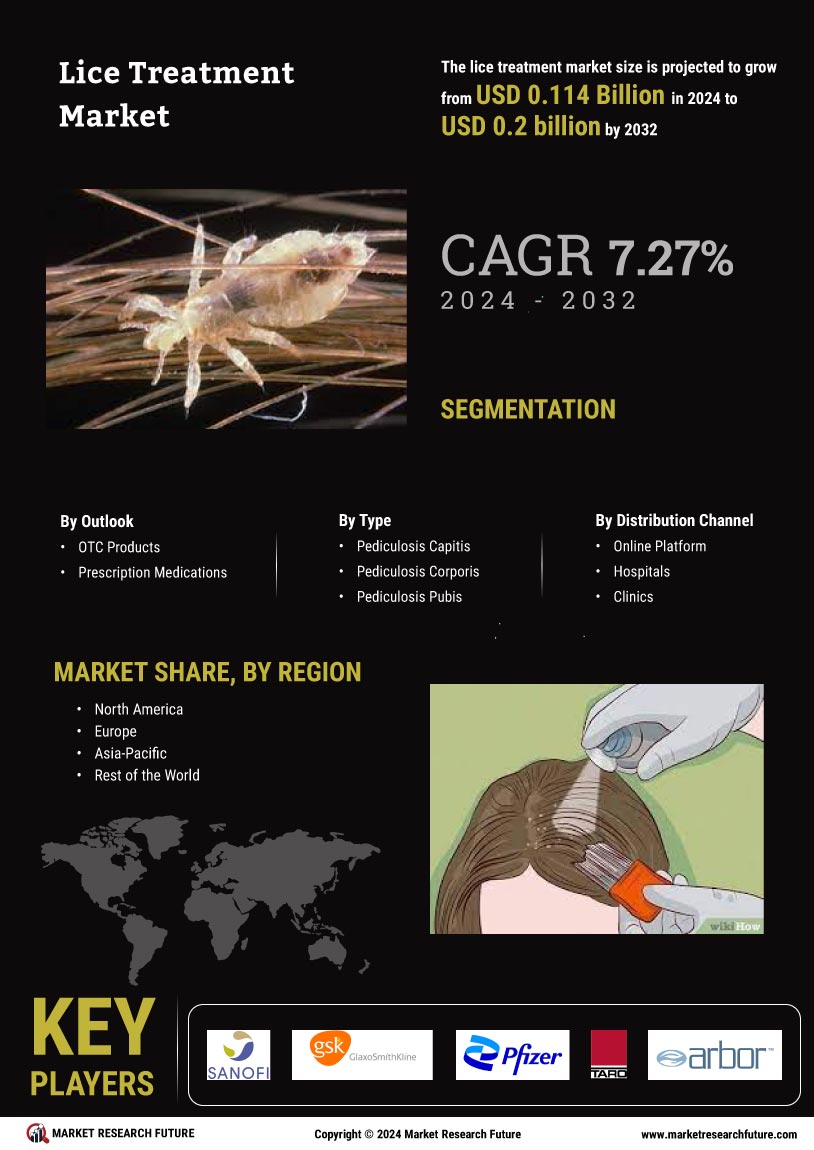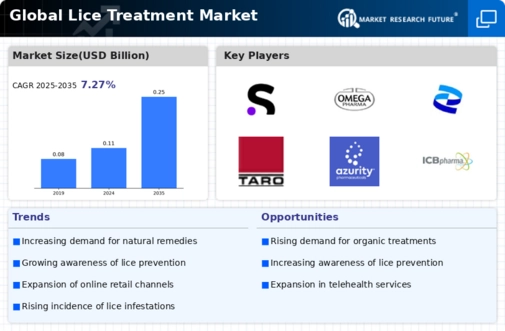Lice Treatment Market Summary
As per Market Research Future Analysis, the global lice treatment market was valued at USD 0.11 billion in 2024 and is projected to reach USD 0.25 billion by 2035, growing at a CAGR of 7.27% from 2025 to 2035. The market is driven by the rising prevalence of head lice, increased awareness of lice diagnosis, and the growing adoption of over-the-counter (OTC) products. The OTC segment accounted for approximately 62-65% of the market revenue in 2022, with pediculosis pubis expected to be the fastest-growing segment during the forecast period. North America is anticipated to be the largest regional market due to a significant child population and increased product approvals.
Key Market Trends & Highlights
The lice treatment market is witnessing significant growth driven by various factors.
- Market Size in 2024: USD 0.11 billion; projected to reach USD 0.25 billion by 2035.
- CAGR from 2025 to 2035: 7.27%; driven by rising head lice prevalence.
- OTC products held 62-65% market share in 2022; high demand in developing regions.
- North America expected to grow significantly due to increased awareness and child population.
Market Size & Forecast
| 2024 Market Size | USD 0.11 billion |
| 2035 Market Size | USD 0.25 billion |
| CAGR | 7.27% |
Major Players
Key players include Sanofi, Topaz Pharmaceuticals Inc, GlaxoSmithKline, Omega Pharma, Pfizer, Taro Pharmaceuticals, Arbor Pharmaceuticals, ICB PHARMA, Merck & Co. Inc, and Galderma Laboratories L.P.


















